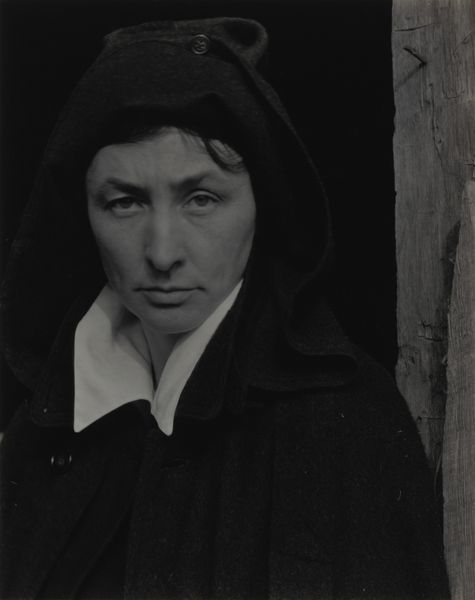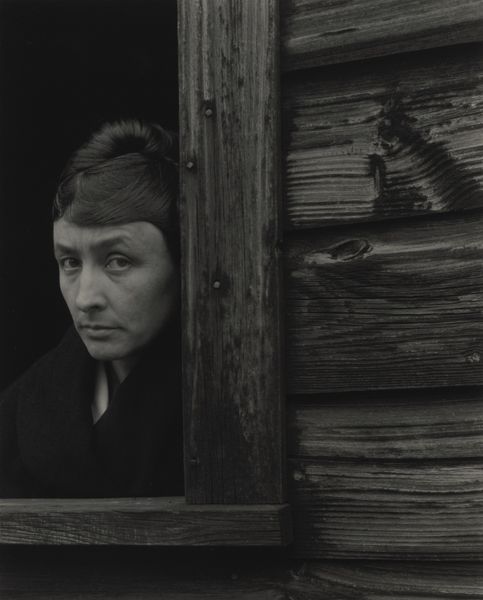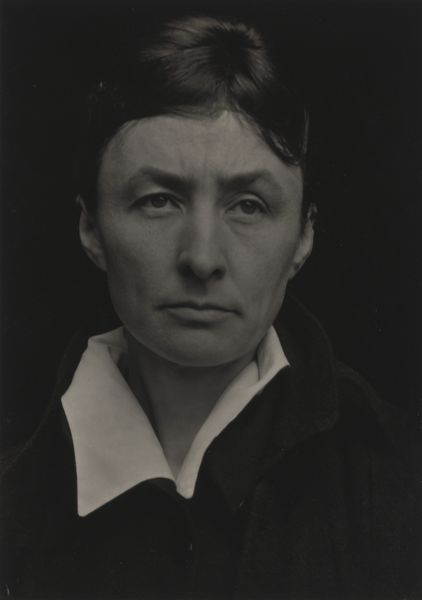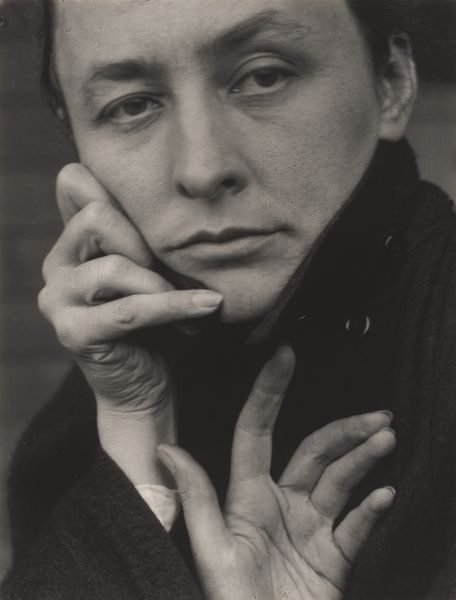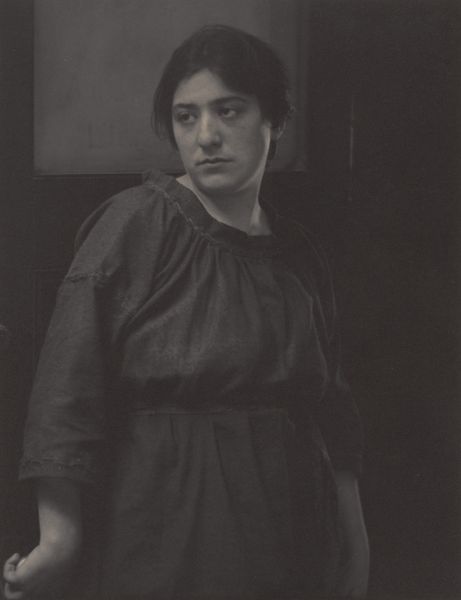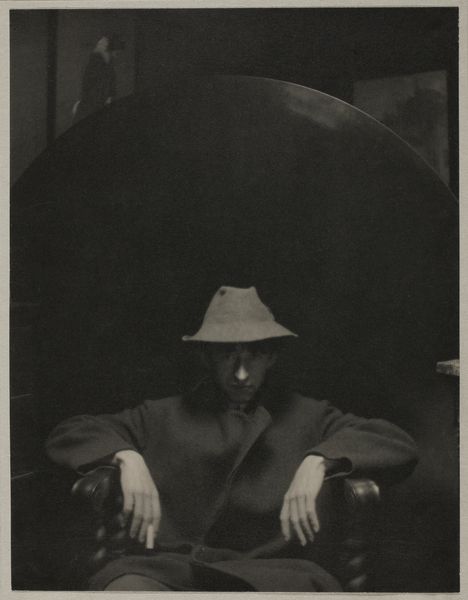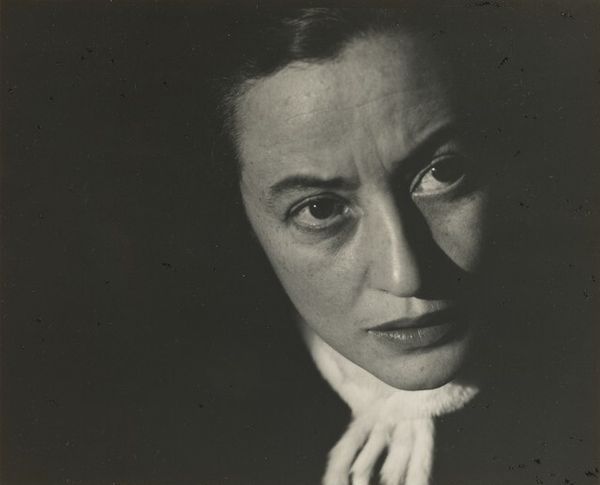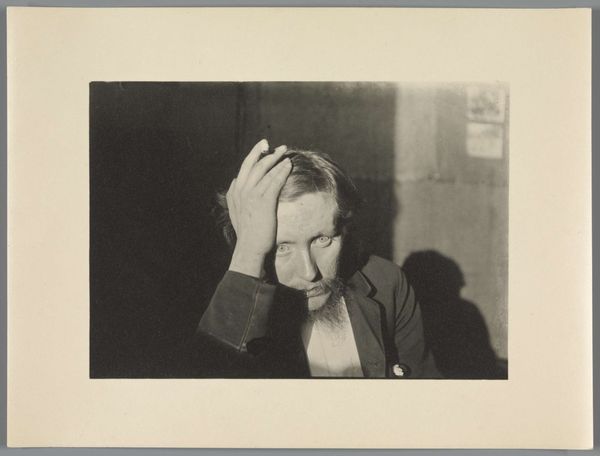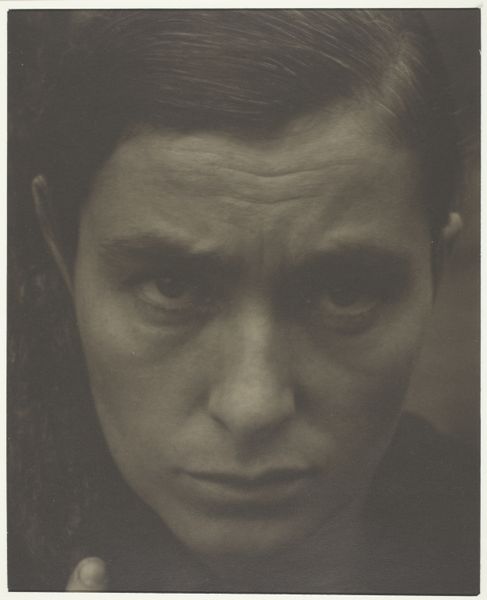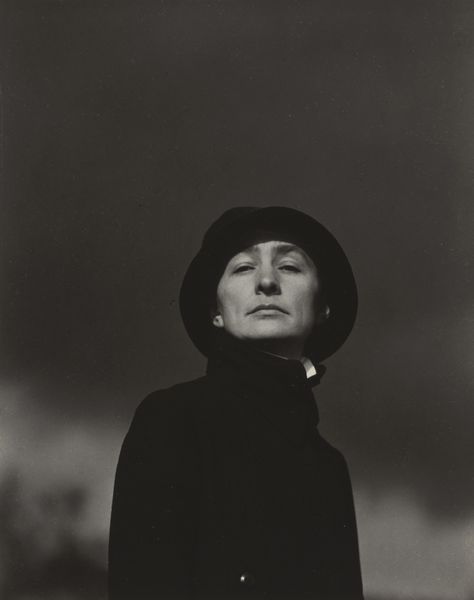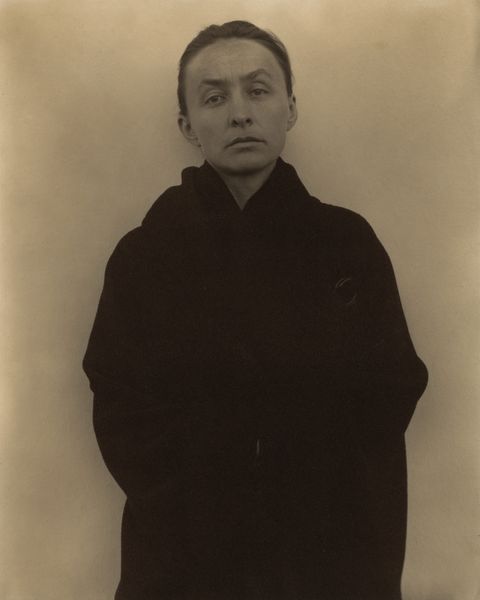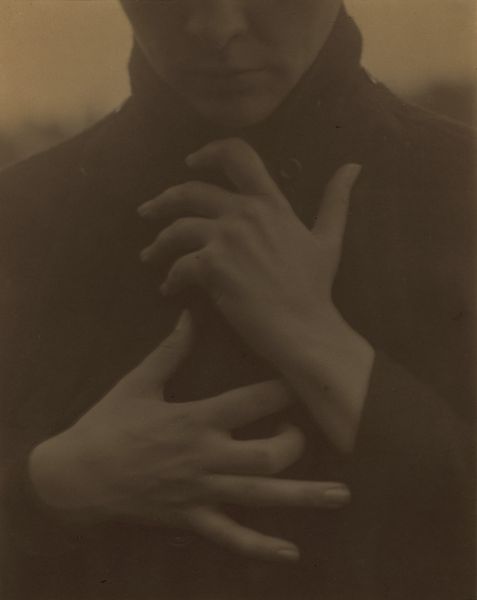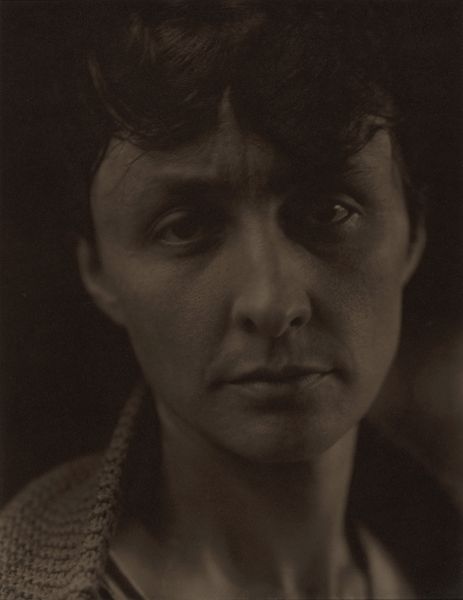
Dimensions: 24.1 × 19.4 cm (image/paper); 50.7 × 40.7 cm (mount)
Copyright: Public Domain
Curator: This is Alfred Stieglitz's "Georgia O'Keeffe," a silver print portrait made in 1922. Editor: My initial reaction is one of solemnity. The dark tones, the woodgrain—it feels weighty, like a moment captured in time with serious intent. Curator: Indeed. Stieglitz's choice of black and white lends itself to a formal examination of light and shadow. Consider how the light sculpts O'Keeffe’s face, emphasizing the strong diagonal of her brow, contrasted against the almost brutalist texture of the wooden structure to her right. Editor: But that wood! Its very presence situates O’Keeffe within a certain framework. It is a stark juxtaposition—the organic, perceived fragility of the artist against the hewn, masculine presence of architecture. The photograph subtly comments on gendered spaces in the art world. We also have to recall Stieglitz's gaze. How much of the portrait is about O'Keeffe's agency and how much about Stieglitz claiming ownership of his muse through the photographic process? Curator: It is tempting to impose narratives of gender onto the composition. However, by isolating form, one can appreciate Stieglitz's exploration of photographic modernism: his precise framing and the almost painterly quality achieved through manipulating silver. Notice the tonal range. Editor: Yet we cannot divorce form from content entirely. O'Keeffe, a significant artist in her own right, is framed here by her husband, who in effect controls her image. I interpret that very formal precision, as you describe it, as a deliberate assertion of Stieglitz’s creative power. Is he framing O'Keeffe or is he controlling the narrative around her? Curator: It's certainly a valid reading, informed by contemporary sensibilities. Yet, from a purely formal perspective, I find the composition striking for its bold geometry and tonal balance. Editor: It speaks volumes about the dynamics within their relationship, which is inextricably linked to both of their artistic outputs and legacies. So when you focus on geometry, I wonder: who decides whose shape it will take? Curator: Perhaps this photograph, with its formal and contextual tensions, speaks to the complexities inherent in all portraits, whether painted or photographic. Editor: Precisely. And perhaps our own dialogue highlights the ever-evolving interpretations that art invites.
Comments
No comments
Be the first to comment and join the conversation on the ultimate creative platform.
